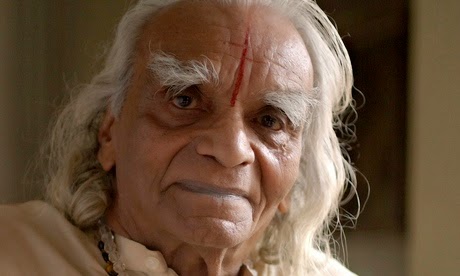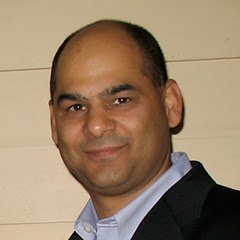…..During Ramzaan, we’d
call the Hindus and Christians over for aapam and curry…We shared our lives…..I sat up all night for Shivaratri…..Vilakkupara has a temple with Shiva as
the pratishtham (presiding deity)…..all the festivities during Makara
Sankaranti, I was part of all that.….
…….
We would guess that the purpose of a “First Men in India” list (see below) is for scoring in a “general knowledge” or GK exam. A mind numbing exercise, if there was one.
The madness of GK exams is highlighted in a famous 1970s Bong novel –
Jana Aranya by Shankar (Mani Shankar Mukhopadhyay), later a memorable movie by Satyajit Ray.
The goal is to short-list nine out of 27,000 graduates. One question relates to a name that is possibly an Indian river OR a (eponymous) ship with the India navy. The examinees are confused, this is a public sector organization (owned by the government) held exam, hence the examiners will prefer the ship as the correct answer!!!
Now all lists are limited to a fashion and so is “First Men in India.” It can be expanded (and cut short) in so many different ways. For example, we consider this of the utmost importance, that Abhinav Singh Bindra won the first individual gold medal in the Olympics (Beijing, 2008). If you have scored a once in a hundred year achievement, it deserves to be celebrated.
…….
A thing about the Nobel Prizes (post 1947). Amartya Sen chose not to relinquish his Indian citizenship but Har Gobind Khorana became an American citizen in 1966 (Nobel in 1968). He was mistreated by his colleagues and bureaucrats in India, but that is hardly news. India should introduce a dual citizenship to honor the memory of HGK!!!
Another thing: Khorana was born in Raipur near Lahore (1922, now called Kabirwala). We are genuinely curious to know if Pakistan has found the time and space to celebrate a Pakistan-born, Punjabi-Hindu Nobel (we know what happened to Abdus Salam).
The most curious (and pathetic) thing? Indians recognizes talent only after the folks have broken international barriers…on many occasions…after they have departed (or about to depart) from this world!!!
Thus the “son of Gandhi” Acharya Vinoba Bhave was the first Indian to win the Magsaysay award. was. He was awarded the Bharat Ratna posthumously in 1982. Sen got the Ratna after he won the Nobel. Ray was given the Ratna on his death-bed….following his life-time Oscar. Ravi Shankar (Robindra Shankar Chowdhury) was nominated for an Oscar (Gandhi, original music score) in 1982 and won the Ratna in 1999.
So…..how about the first “non-Hindus” then? India has the “first” Muslim president (and Sikh Prime Minister). Abdul Rehman (AR) Antulay was the “first” Muslim Chief Minister of Maharashtra (politically more significant than the President perhaps), but no Muslim PM yet (also none on the horizon).
Slumdog Millionaire (2009) helped score a number of Indian “firsts” – AR Rahman for original music score and song, Gulzar- song, and Resul Pookutty- sound mixing (along with Ian Tapp and Richard Pryke).
The Saudi Gazette has this to say about the winners: Many commentators have noted that the three Indian Oscar winners (Pookutty, Rahman and Gulzar) are all Muslim.
Well the commentators are right in one way…and also wrong.
……….
(1) Sampooran Singh Kalra (Gulzar) was born a Sikh in Dina, Jhelum district, which is presently in Pakistan. Sad to say…hard-line Sikhs will dislike the fact that he is not a Kesh-Dhari (no turban, trims hair).
We are sure that Gulzar Sahib would not mind being called a muslim, but he is famous and there are many clans who would like to claim kinship…including (Hindu) Bongs. In support of such a claim we note the following: he speaks fluent Bong, rose to fame under the baton of Bong directors (Bimal Roy, Hrishikesh Mukherjee), a soul mate of music director Rahul Dev Burman, married (separated) to actor-superstar Raakhee (Majumdar), with a daughter named Meghna (after the famous river in Bengal, now in Bangladesh).
…………
(2) AR Rahman was born RS Dileep Kumar, a Hindu (father: RK Shekhar and mother Kashturi, converted name Kareema). Rahman was introduced to Qadiri Islam
(Qadiri is a Sufi sect) when his younger sister was seriously ill in 1984. He converted to
Islam (his mother’s religion) with other members of his family in 1989
at age 23, changing his name from R. S. Dileep Kumar to Allah Rakha
Rahman (A. R. Rahman) [ref. Wiki].
We are assured that the Saudi Gazaette would not view religious conversion with concern when it goes in one particular direction (then again Saudis may view Sufi practices as un-islamic). But just as a thought question, what if the conversion was in the opposite direction (and in a muslim country)?
………………
(3) The most interesting life-story is that of Resul “our home is the land of Om” Pookutty.
The Pookutty-s are a Communist family from Villakku-para (Kollam district in south Kerala), but Resul was deeply influenced by his mother’s imagination of Islam which binds in so many ways to Hinduism and even Christianity. The Saudis would probably consider such behavior as borderline apostasy. This is similar to the polluted Islam of (then) East Pakistan that made Muslim Bengalis not quite pure enough in the eyes of their Western brothers.
……
That fabulous Oscar acceptance speech about Home being the Land of Om…How? (vulgar sub-text: You’re Muslim but you said that?).
That was not the occasion to thank my cat and dog. It was a chance to make a point to the watching world and I didn’t waste it.
I’m
an Indian first, before Muslim and Malayali. I grew up with Hindus and
Christians, went to school with them, I work with them. Religion never
came in the way and it doesn’t now.
You waded right into hardcore religion with that? When
it’s the thing in some urban circles to say, “Oh, I’m spiritual, not
religious,” and hide out in a feel-good fuzzy bandwidth of pretty
thoughts?
(Grins). My mother, Nabeeza Beevi, who died in early 2000, taught me that outlook. She was a devout Muslim who did namaaz
five times a day. Her Islam made her a woman with a great sense of
humanism and spirituality. She learnt her spirituality from religion.
During Ramzaan, we’d call the Hindus and Christians over for aapam and curry (and guess who did the grinding for the batter: me!). And for Easter, we’d be called for more aapam
and curry. We shared our lives. I sat up all night for Shivaratri, our
village, Vilakkupara, up in the timberlands of Kerala, has a temple with
Shiva as the pratishtham (presiding deity). And all the
festivities during Makara Sankaranti (mid-January), I was part of all
that. Personally, I think it’s important to have a religious identity.
You can’t be afraid of religion. You have to deal with it, otherwise
look what happens.
How do you deal with it?
I did my first katha-prasangam (performance of
story-recitation) at our Shiva temple. My mother taught us the Quran (my
father was a Communist and his brother, PT Pookutty, was the first
Communist municipal councilor of Kayamkulam nearby). But my mother never
forced religion on us. I learnt that all South Indian Muslims were
Sunni in a very amusing way. Some years ago, a gentleman from Hyderabad
called my elder brother, Shamsuddin, with a marriage proposal for me. I
answered the phone and pretended to be my brother. When he asked if we
were Sunni or Shia, I didn’t know. I only knew the Quran. So I said,
“Shia!” in a wild guess. The man hung up at once. Only then did I
discover this.
– See more at: http://www.hindustantimes.com/comment/columnsothers/resul-on-religion/article1-408887.aspx#sthash.MYAmDUgO.dpuf
That fabulous Oscar acceptance speech about Home being the Land of Om…How? (vulgar sub-text: You’re Muslim but you said that?).
That was not the occasion to thank my cat and dog. It was a chance to make a point to the watching world and I didn’t waste it.
I’m
an Indian first, before Muslim and Malayali. I grew up with Hindus and
Christians, went to school with them, I work with them. Religion never
came in the way and it doesn’t now.
You waded right into hardcore religion with that? When
it’s the thing in some urban circles to say, “Oh, I’m spiritual, not
religious,” and hide out in a feel-good fuzzy bandwidth of pretty
thoughts?
(Grins). My mother, Nabeeza Beevi, who died in early 2000, taught me that outlook. She was a devout Muslim who did namaaz
five times a day. Her Islam made her a woman with a great sense of
humanism and spirituality. She learnt her spirituality from religion.
During Ramzaan, we’d call the Hindus and Christians over for aapam and curry (and guess who did the grinding for the batter: me!). And for Easter, we’d be called for more aapam
and curry. We shared our lives. I sat up all night for Shivaratri, our
village, Vilakkupara, up in the timberlands of Kerala, has a temple with
Shiva as the pratishtham (presiding deity). And all the
festivities during Makara Sankaranti (mid-January), I was part of all
that. Personally, I think it’s important to have a religious identity.
You can’t be afraid of religion. You have to deal with it, otherwise
look what happens.
How do you deal with it?
I did my first katha-prasangam (performance of
story-recitation) at our Shiva temple. My mother taught us the Quran (my
father was a Communist and his brother, PT Pookutty, was the first
Communist municipal councilor of Kayamkulam nearby). But my mother never
forced religion on us. I learnt that all South Indian Muslims were
Sunni in a very amusing way. Some years ago, a gentleman from Hyderabad
called my elder brother, Shamsuddin, with a marriage proposal for me. I
answered the phone and pretended to be my brother. When he asked if we
were Sunni or Shia, I didn’t know. I only knew the Quran. So I said,
“Shia!” in a wild guess. The man hung up at once. Only then did I
discover this.
– See more at: http://www.hindustantimes.com/comment/columnsothers/resul-on-religion/article1-408887.aspx#sthash.MYAmDUgO.dpuf
That fabulous Oscar acceptance
speech about Home being the Land of Om…How? (vulgar sub-text: You’re Muslim but
you said that?).
That was not the occasion to thank
my cat and dog. It was a chance to make a point to the watching world and I
didn’t waste it.
I’m an Indian first, before Muslim and Malayali. I grew up with Hindus and
Christians, went to school with them, I work with them. Religion never came in
the way and it doesn’t now.
You waded right into hardcore
religion with that? When it’s the thing in some urban circles to say, “Oh, I’m
spiritual, not religious,” and hide out in a feel-good fuzzy bandwidth of
pretty thoughts?
My mother, Nabeeza Beevi, who died in early 2000, taught
me that outlook. She was a devout Muslim who did namaaz five times a
day. Her Islam made her a woman with a great sense of humanism and
spirituality. She learnt her spirituality from religion.
During Ramzaan, we’d
call the Hindus and Christians over for aapam and curry (and guess who
did the grinding for the batter: me!). And for Easter, we’d be called for more aapam
and curry. We shared our lives.
I sat up all night for Shivaratri, our village,
Vilakkupara, up in the timber lands of Kerala, has a temple with Shiva as
the pratishtham (presiding deity). And all the festivities during Makara
Sankaranti (mid-January), I was part of all that.
Personally, I think it’s
important to have a religious identity. You can’t be afraid of religion. You
have to deal with it, otherwise look what happens.
How do you deal with it?
I did my first katha-prasangam
(performance of story-recitation) at our Shiva temple.
My mother taught us the
Quran (my father was a Communist and his brother, PT Pookutty, was the first
Communist municipal councilor of Kayamkulam nearby). But my mother never forced
religion on us.
I learnt that all South Indian Muslims were Sunni in a very
amusing way. Some years ago, a gentleman from Hyderabad called my elder
brother, Shamsuddin, with a marriage proposal for me. I answered the phone and
pretended to be my brother. When he asked if we were Sunni or Shia, I didn’t
know. I only knew the Quran. So I said, “Shia!” in a wild guess. The man hung
up at once. Only then did I discover this.
……
First Men in India
| # |
Achievement |
Man |
| 1 |
The first President of Indian Republic |
Dr. Rajendra Prasad |
| 2 |
The first Prime Minister of free India |
Pandit Jawahar Lal Nehru |
| 3 |
The first Indian to win Nobel Prize |
Rabindranath Tagore |
| 4 |
The first President of Indian National Congress |
W. C. Banerjee |
| 5 |
The first Muslim President of Indian National Congress |
Badruddin Tayyabji |
| 6 |
The first Muslim President |
Dr. Zakir Hussain |
| 7 |
The first British Governor General |
Lord William Bentinck |
| 8 |
The first British Viceroy |
Lord Canning |
| 9 |
The first Governor General of free India |
Lord Mountbatten |
| 10 |
The first and the last Indian to be Governor General of free India |
C. Rajgopalachari |
| 11 |
The first man who introduced printing press in India |
James Hicky |
| 12 |
The first Indian to join the I.C.S. |
Satyendra Nath Tagore |
| 13 |
India’s first man in space |
Rakesh Sharma |
| 14 |
The first Prime Minister who resigned without completing the full term |
Morarji Desai |
| 15 |
The first Indian Commander – in – Chief |
General Cariappa |
| 16 |
The first Chief of the Army Staff |
Gen. Maharaj Rajendra Singhji |
| 17 |
The first Indian member of the Viceroy’s executive council |
S. P. Sinha |
| 18 |
The first President of India who died while in office |
Dr. Zakir Hussain |
| 19 |
The first Prime Minister who did not face the Parliament |
Charan Singh |
| 20 |
The first Field Marshal |
S.H.F. Manekshaw |
| 21 |
The first Indian to get Nobel prize in Physics |
C.V. Raman |
| 22 |
The first Indian to receive Bharat Ratna award |
Dr. Radhakrishnan |
| 23 |
The first Indian to cross English channel |
Mihir Sen |
| 24 |
The first person to receive Jnanpith award |
Sri Shankar Kurup |
| 25 |
The first Speaker of the Lok Sabha |
Ganesh Vasudeva Mavalankar |
| 26 |
The first Vice – President of India |
Dr. Radhakrishnan |
| 27 |
The first Education Minister |
Abul Kalam Azad |
| 28 |
The first Home Minister |
Sardar Vallabh Bhai Patel |
| 29 |
The first Indian Air Chief Marshal |
S. Mukherjee |
| 30 |
The first Indian Naval Chief |
Vice Admiral R. D. Katari |
| 31 |
The first judge of International Court of Justice |
Dr. Nagendra Singh |
| 32 |
The first person to receive Paramveer Chakra |
Major Somnath Sharma |
| 33 |
The first person to reach Mt. Everest without oxygen |
Sherpa Anga Dorjee |
| 34 |
The first Chief Election Commissioner |
Sukumar Sen |
| 35 |
The first person to receive Magsaysay Award |
Acharya Vinoba Bhave |
| 36 |
The first person of Indian origin to receive Nobel Prize in Medicine |
Hargovind Khurana |
| 37 |
The first Chinese traveller to visit India |
Fa-Hein |
| 38 |
The first person to receive Stalin Prize |
Saifuddin Kitchlu |
| 39 |
The first person to resign from the central cabinet |
Shyama Prasad Mukherjee |
| 40 |
The first foreigner to receive Bharat Ratna |
Khan Abdul Ghaffar Khan |
| 41 |
The first person to receive Nobel Prize in Economics |
Amartya Sen |
| 42 |
The first Chief Justice of Supreme Court |
Justice Hiralal J. Kania |
………………………………..
…..
regards




